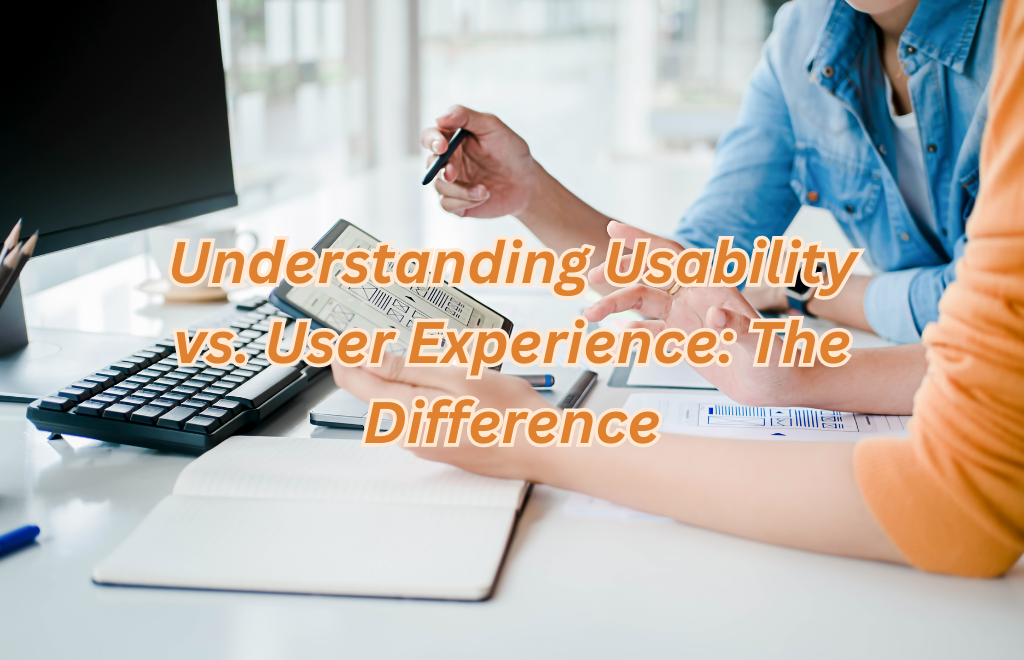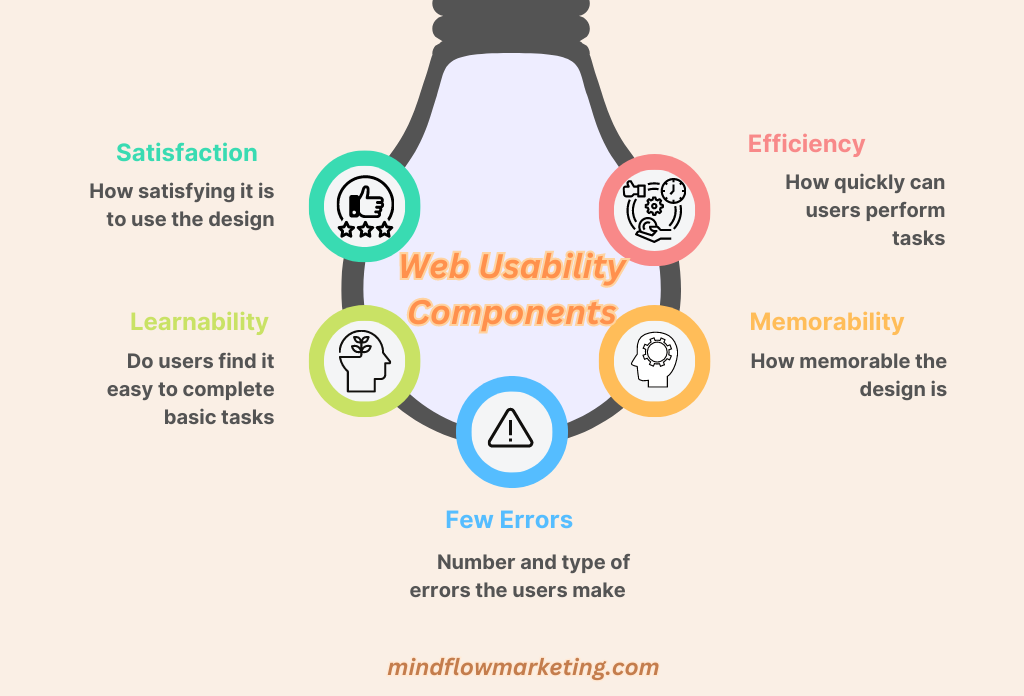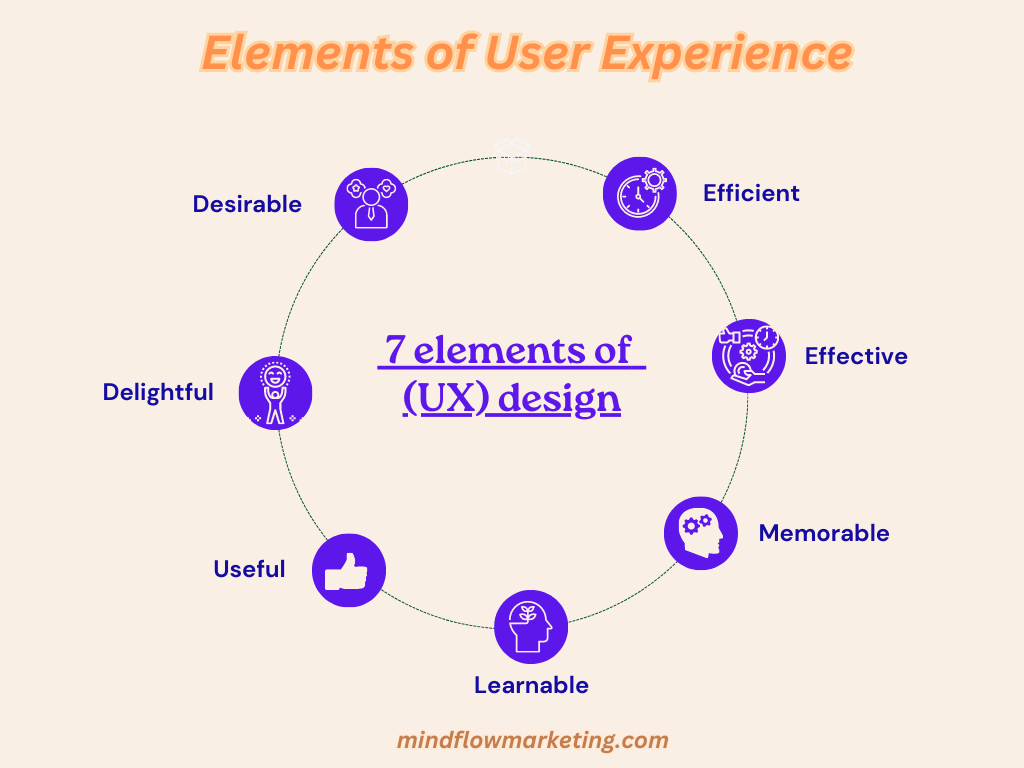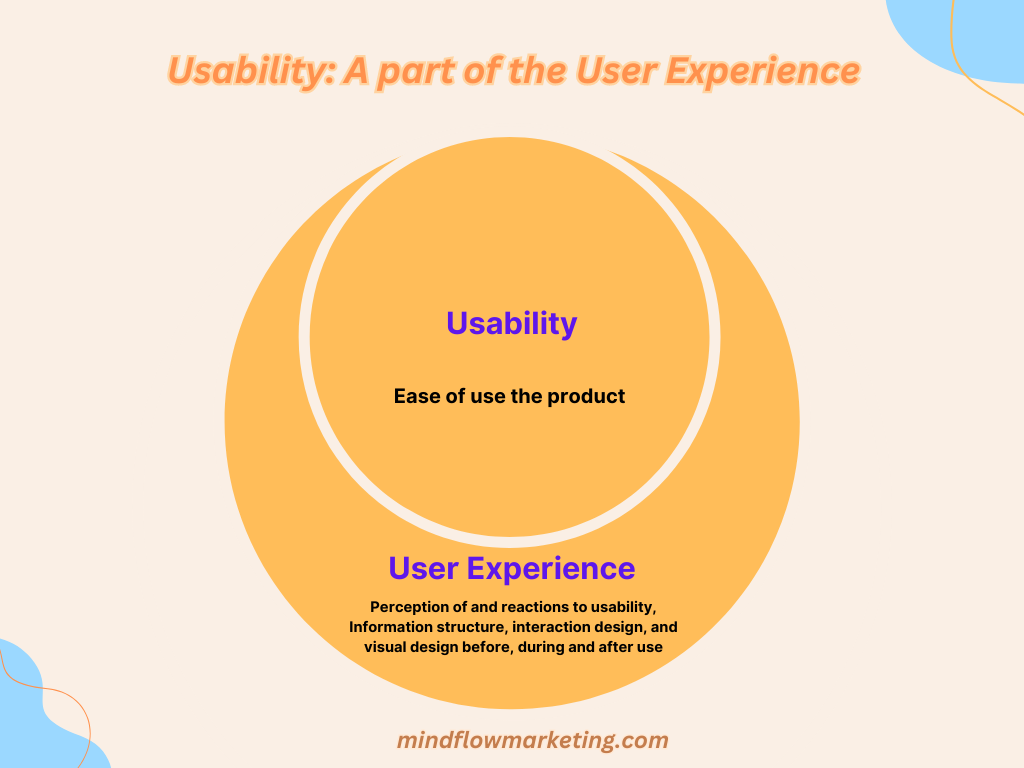In this article, you will gain an understanding of the distinctions between UX and usability, their significance in product design, and how they can be evaluated through testing.
Initially, let’s look at the distinctions between UX and usability – two terms that are often confused but have distinct focal points. By understanding each concept’s definition, you’ll clearly understand what they mean.
We’ll then dive into why it’s essential to prioritize both UX and usability in your product design process.
You’ll discover that good user experience requires more than just high usability scores; other factors like brand experience and psychological expectations also play a vital role.
To sum up briefly – This blog post will provide valuable information for anyone interested in improving their product’s overall quality by prioritizing user experience and usability throughout the entire design process.

More Resources :
What is Usability?
Usability describes the user experience when using a website or app and how straightforward it is to achieve objectives without too much effort or misunderstanding. To ensure good usability, designers must consider navigation, layout, design, and functionality when creating websites.
Elements of Usability

#1. Navigation
Navigation is key in terms of usability; if it’s too complicated or hard to find what you’re looking for on the site, then chances are people won’t stick around long enough actually to use the site.
According to a study, 97% of business customers mentioned ease of use as their first concern when choosing a mobile app. Therefore, your site should be intuitive so users don’t have to think twice about where they need to go next to accomplish their goals on the website.
This means using logical page hierarchy and making sure menus are clearly labeled so visitors know exactly where they need to go without having any second thoughts about it.
#2. Functionality
Functionality is another major factor when considering usability; if something doesn’t work properly, then chances are people won’t want to keep trying until it does – this could lead them to leave your site altogether, which would mean losing potential customers.
Making sure everything works correctly before launching your website can save you from many headaches down the line (not to mention lost revenue). Additionally, keeping up with updates helps maintain functionality over time since technology changes these days rapidly – staying ahead of trends ensures that your website remains usable even years after its initial launch date.
Overall, making sure that a website or app is easy and effective to utilize by its users is the objective of usability. With this knowledge, let us now proceed to explore the concept of user experience.
What is User Experience?
UX is an essential consideration when devising a product or service for users. It goes beyond mere usability to include emotional aspects such as trustworthiness, delightfulness, and user satisfaction.
UX designers must consider the psychological effects of using a product or service, such as reliability, pleasure, and total contentment. UX designers must consider these factors when creating user interfaces or products.
Elements of User Experience

#1. Trustworthiness
Trustworthiness is essential in any user experience design because it helps create a sense of security among users that their data will be safe and secure.
#2. Delight
Delight is another vital component of UX design, as it can create positive impressions when customers interact with your product or service.
#3. Overall Satisfaction
Finally, overall satisfaction is key in determining whether a user will continue to use your product or not; if the user feels satisfied with their experience, then they are more likely to come back again and recommend it to others.
To ensure that all of these elements are included in your design, you need to be attentive to how users interact with your product or service on multiple levels – from visual cues like the color scheme and font size down to micro-interactions like hover states and animation effects – nothing is overlooked.
Furthermore, clear and intuitive navigation is essential for providing customers with an effortless experience. By considering both ease of use and the overall user experience when creating, one can guarantee a satisfactory encounter for any kind of consumer, no matter what device they’re utilizing.
This includes testing out different designs on various devices before releasing them publicly so that any issues can be addressed prior to launch. Gathering feedback from real-life testers is also essential to gain insight into how well-designed something really is, which allows developers and designers to make necessary changes before release.
All in all, user experience is a broad concept that encompasses the overall feeling and satisfaction of users when interacting with an interface. And by understanding how usability and user experience are related, we can create more effective web designs for our clients.
Usability & User Experience – How Are They Related ?
Usability and user experience (UX) are closely intertwined, as both aim to make products easier for users. For instance, good usability helps create a positive user experience by reducing frustration and confusion while providing an enjoyable experience for users.

Usability
Usability assesses the convenience of a product or service, with the objective of making it more uncomplicated and effective for people to interact. Usability requires recognizing the desires of your intended audience and formulating components that will instinctively fulfill those needs.
For example, when creating a website, usability focuses on elements such as navigation menus, page layout, content structure, search functions, etc., all designed to make it easier for visitors to find what they’re looking for quickly.
User Experience – UX
UX delves deeper than usability, looking at how people perceive when engaging with a product or service – not just if it’s easy to use but also if they find pleasure in doing so. UX design takes into account factors such as aesthetics (visuals like colors and fonts), emotions (feelings like trustworthiness or delight), psychology (behaviors like habit formation), and accessibility considerations (like the ease of use regardless of physical ability).
To illustrate this point further: A well-designed website may be used because its navigation menu works properly. However, if that same site has poor visuals or outdated content, then its overall UX would suffer accordingly because people form 75% of their judgment about a website’s credibility purely based on its aesthetics.
How Both of These Are Related?
The two concepts are related in that good usability helps create a positive user experience; however, it is important not to confuse them as interchangeable terms since there are subtle differences between them – usability deals primarily with functionality, whereas UX covers feelings too.
By understanding these distinctions, you can ensure that your products provide both practicality and pleasure, which will help increase customer satisfaction over time.
Next, we’ll look at why both user experience and usability are essential for your website’s success.
Importance of Usability and User Experience
Usability and user experience (UX) are two of the most important aspects of any website. And when it comes to creating a successful online presence, they should be given top priority.
How Effective is Usability?
When designing a website, usability should always come first, as this will ensure that people can easily navigate around your site and access all its features quickly and efficiently.
This includes making sure that menus are clearly labeled with descriptive words so that users know exactly where they need to go to find what they’re looking for; ensuring links open up in new windows, including search bars, so people can quickly locate the content; reducing page loading times by optimizing images; providing clear instructions if needed; etc.
All these elements help make navigation easier, which leads to better user satisfaction levels.
How Effective is User Experience?
User experience goes beyond just usability, though – it also takes into account things like visual design, content quality, interactivity, and feedback loops between customer service teams and customers themselves via social media channels, such as Twitter or Facebook, etc. And according to this report by Forrester, every $1 invested in UX results in a $100 ROI.
A good UX designer will consider all these factors when creating an interface that looks great and provides a pleasant journey through the entire process from start to finish – whether someone is browsing products or signing up for services, etc.
In conclusion, both usability and user experience play an integral role in determining how successful a website will be at engaging visitors over time.
More Resources :
Usability vs. User Experience – The Difference
Usability and user experience are two terms that are often used interchangeably, but they actually have very different meanings. Usability measures how easy it is for users to complete tasks on a website or application.
It looks at the design elements such as navigation, layout, and content structure to ensure that users can find what they need quickly and easily.
While User experience (UX) takes usability one step further by looking at the entire journey from start to finish, UX considers not only the design elements of a website or app but also factors in emotions like trust, delight, surprise, frustration, and confusion when evaluating how successful an interaction was with a product or service.
When discussing usability vs. user experience, it’s important to understand what each term means so you can make sure your products meet both criteria for success.
The Difference!
This includes things like ensuring all buttons are clearly labeled so users know exactly where they’re going when they click them, having consistent page layouts throughout your site so visitors don’t get lost, providing clear instructions on how to use features, and making sure there aren’t too many steps required for completing tasks within your product or service (ease-of-use).
Or do they feel delighted after successfully completing their task?
UX designers consider these emotional responses when designing experiences that will leave customers feeling satisfied every time they use their product or service – whether online or offline – which ultimately leads to increased customer loyalty over time.
In short, Usability is about efficiency – does this work well enough? Whereas user experience is about emotion – does this make me feel good enough? Both aspects should be taken into consideration when designing products if you want them to be successful in today’s competitive marketplace.
And then, by combining usability and user experience together, you can ensure that customers have a positive overall interaction with whatever it is you are providing them – whether it be an app or website.
Focusing on both areas during development stages rather than just one aspect over another will result in better products/services being created since there will be less room for mistakes due to the lack of attention paid to either element separately. This ultimately leads to higher levels of customer satisfaction which translates directly into increased revenue opportunities down the line.
FAQs Related to Usability Vs. User Experience: What’s the Difference?
Conclusion
Overall, it is imperative to be aware of the disparity between usability and user experience when constructing web pages. Usability focuses on how easy a website is for users to navigate, while user experience looks at overall satisfaction with the site. Combining the two elements can create an optimal visitor experience, leading to heightened customer involvement and improved conversion rates.
By understanding what makes up each element of usability vs. user experience: what’s the difference? Web developers can ensure their sites offer customers a great browsing journey every time they visit.
Unlock the full potential of your website by improving its search engine visibility, site architecture, usability, and user experience. Take action now to maximize success with an experienced professional who understands all aspects of web development.